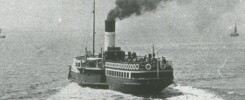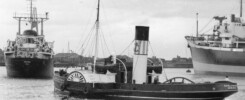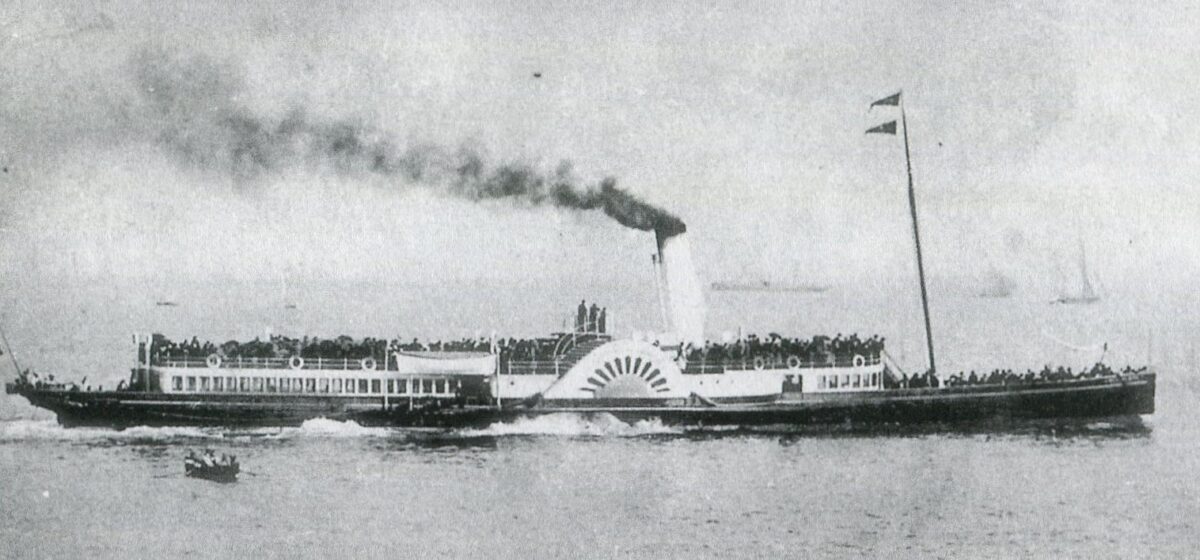
On Thursday 13th December 1928 Captain Alec Campbell, one of the two brothers who founded P & A Campbell, was buried at his home village of Kilmun on the north shore of the Holy Loch having died three days earlier.
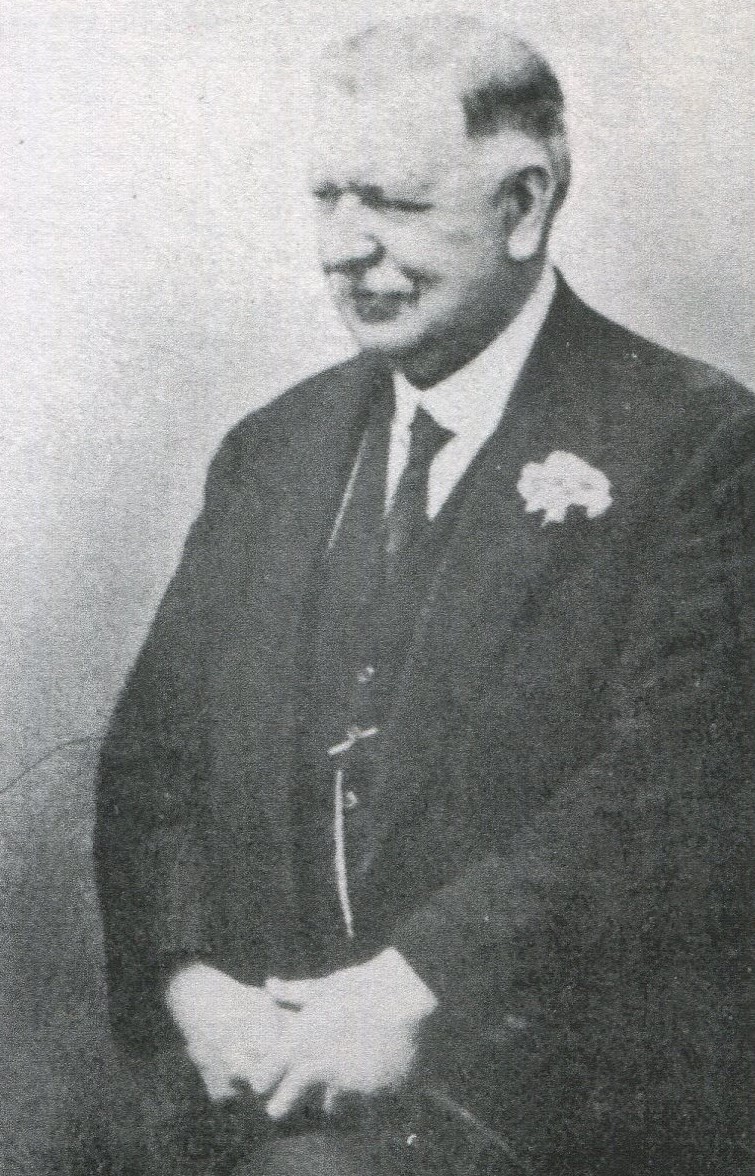
Alec and Peter came from a family which had owned and operated ships on the Clyde from the middle of the nineteenth century. In 1885 they had delivered a new paddle steamer called Waverley to run between Glasgow and Kilmun but she proved too big for the available traffic.
In 1887 Captain Alec took her south on charter for use on the Bristol Channel where her speed of 19 knots proved invaluable to combat the extreme tides found there. This opened the brother’s eyes to the commercial opportunities which might be available to them in that arena away from the expanding competition they faced on the Clyde from the railway companies. So in 1888 Captain Alec operated Waverley on the Bristol Channel in his own right leaving his brother Peter to supervise the Clyde operation.
This new service showed promise so from 1889 they shifted their whole business down south and the rest, as they say, is history. In 1893 they set up the company P & A Campbell and started the process of expanding their paddle steamer excursion fleet taking on, and generally seeing off, all competition from rival operators as they went.
It was said that their particular skill sets complemented each other. Both were master mariners so knew their onions in the realm of ship operation. Alec was said to have great business acumen and in his own quiet way forged the commercial path of the company with astonishing success. Peter was more outgoing and in his youth had been a keen rugby player. As well as being a master mariner he was also a certificated chief engineer so there was nothing he didn’t know about the inner workings of paddle steamers either. Together they made an ideal, highly experienced and formidable team for paddle steamer operation and as such became Joint Managing Directors of P & A Campbell.
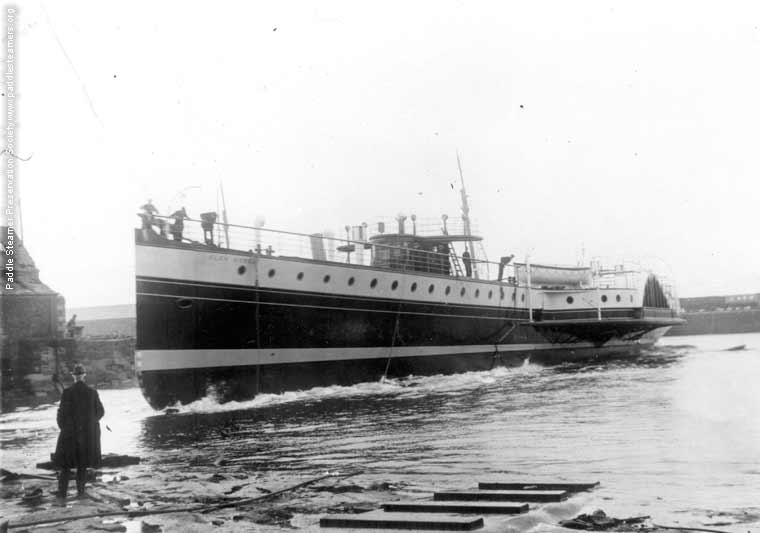
Captain Alec Campbell returned to live in his beloved Scotland on the banks of the Clyde at the outbreak of the First World War but was back in Bristol every summer for the operating season. The last new paddle steamer commissioned by him and his brother was the Glen Gower in 1922.
As the years rolled on Captain Alec developed heart trouble and died at his home in Kilmun on Monday 10th December 1928.
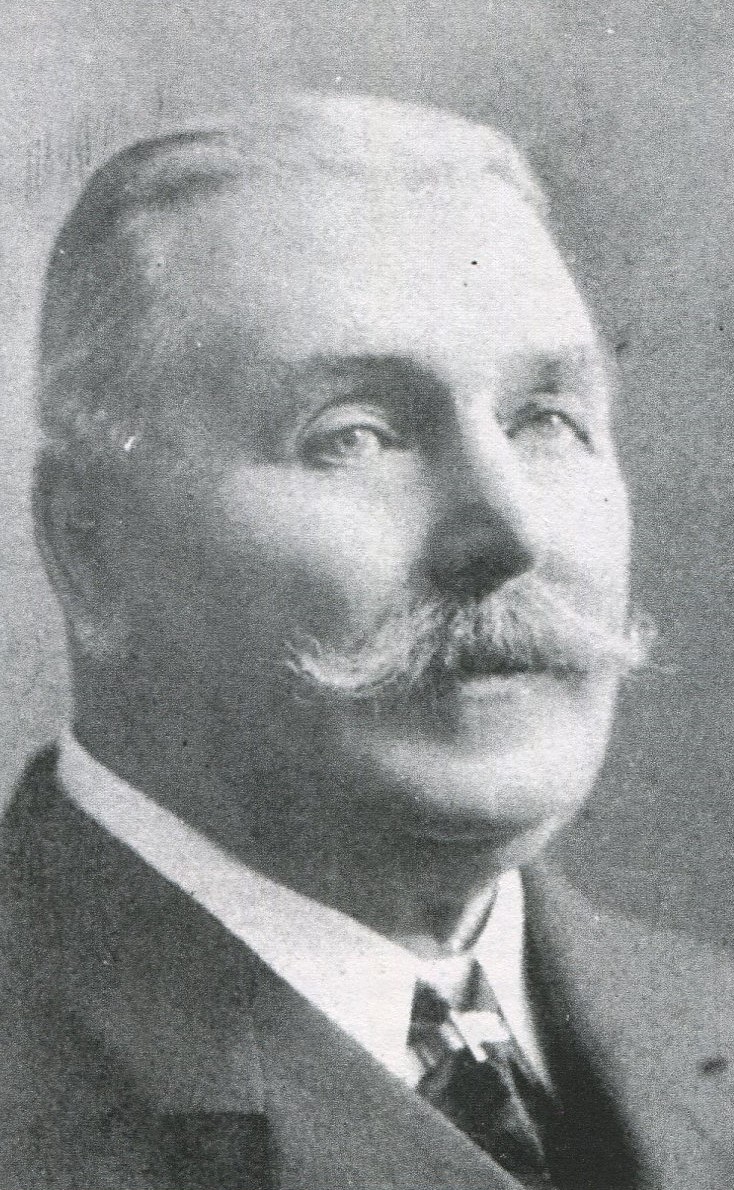
After his brother’s death Captain Peter appointed Mr William James Banks to take his brother’s place alongside him as Joint Managing Director and the two continued to run the company together until Peter retired in 1935 aged 77. He lived on for another three years and died unexpectedly at his home at Wooton Under Edge a few miles northeast of Bristol on 18th December 1938 four days after his 80th birthday. It was almost exactly ten years after his brother Alec had died in Kilmun on 13th December 1928.
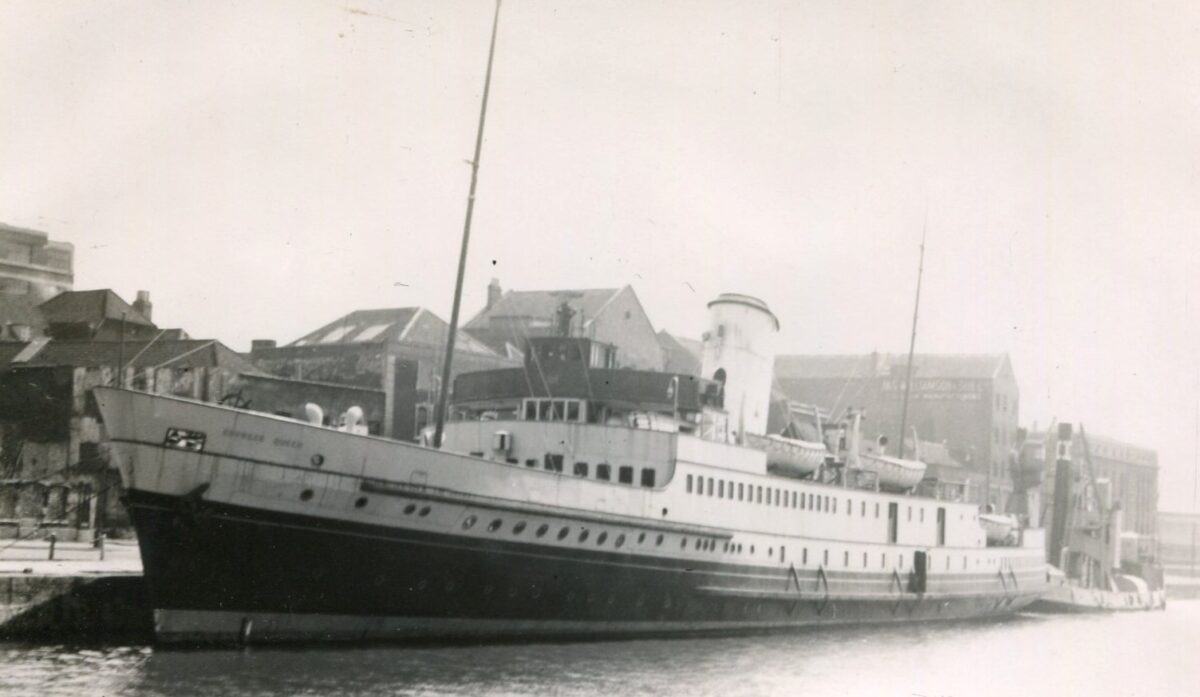
Although developments on the Thames in the 1930s led to the building of large screw propelled ships for the day excursions market and cross Channel trade to France, the P & A Campbell management under the two Campbell brothers resisted such controversial change to their services on the Bristol Channel and the South Coast. It was not until they had both passed on that the management ordered the large turbine steamer Empress Queen in 1939 for the cross Channel trade from the Sussex resorts but she was not delivered until 1940 by which time Britain was at war. Oops!
After the war and on up to 1955 the Government refused to allow “No Passport Trips” to the Continent so Empress Queen became a bit of a white elephant never sailing on the prime routes for which her large capacity was designed. She tried long coastal cruises from the Sussex resorts from 1947 to 1950 but these were not a financial success. At 1,781 GRT she was a big boat to fill up day in and day out.
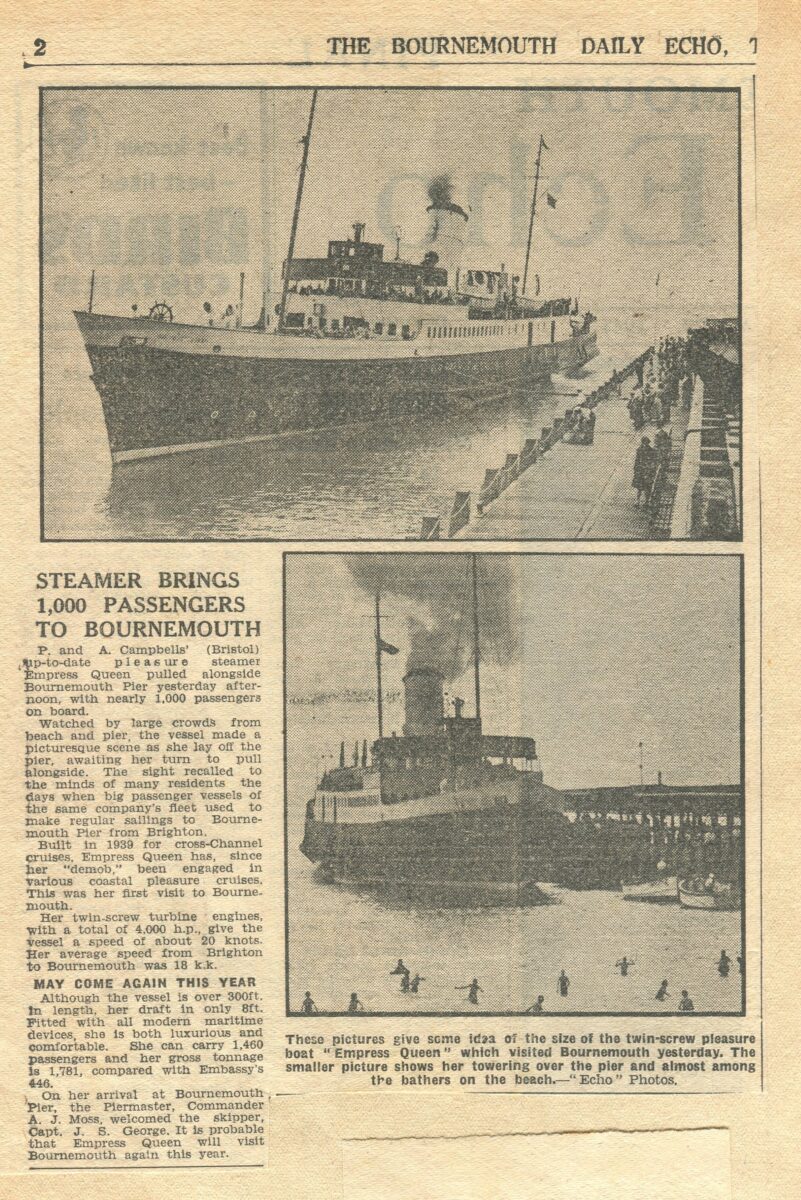
She wasn’t anyway really ideal for work alongside these shallow draught piers with the tide running across them on the Sussex Coast, the Isle of Wight and at Bournemouth where she made a call at least once in the 1947 season on a day trip from Brighton. Not only was there not a lot of water on these piers at chart datum but also the rise and fall was comparatively small so there wasn’t that much water at high tide either. For example, the tide at Bournemouth only goes up and down by about 2 metres. Reports from the time speak of difficulties getting alongside, slow berthing and occasional damage. In any case with a vessel of this size her master (in her case the highly experienced Captain Jack George) had to be careful. Land too hard and you might demolish the whole landing stage itself with the sheer weight of such a big ship.
In 1951 Empress Queen tried her hand based at Torquay again running along the coast but adding cross Channel trips to Guernsey to her roster but these too lost money so she was withdrawn and put up for sale in 1953.
In 1955 she was sold for further service in Greece under the name of Pillipos. She was badly damaged by fire at Keratsini near Piraeus in 1972 and was subsequently broken up in 1974.
Empress Queen was the biggest vessel ever built for P & A Campbell. She might very well have been a commercial success if she had been commissioned a few years earlier but the timing of her order could not have been worse. The austerity and finger wagging attitude of the post war Government did nothing to help subsequently.
This illustrates another rule of business. Timing is everything. Hit the market with the right product at the right time, as the GSN did with their Queen of the Channel, Royal Sovereign and Royal Daffodil on the Thames from 1935, when people like it and want to buy into it? Result success. Hit the market with the same product at the wrong time when people can’t buy it or don’t want to into buy into it for whatever reason? Result failure. And so it was with the Empress Queen.
Maybe if the Campbell brothers were looking down from a cloud on high as Empress Queen gobbled up cash and failed to earn sufficient revenue to sustain her in her short post war career with the company, then perhaps they had a little chuckle amongst themselves and nodded sagely about the benefits of the paddle wheel and operating ships of a size commensurate with the scale of the available traffic.
Kingswear Castle returned to service in 2023 after the first part of a major rebuild which is designed to set her up for the next 25 years running on the River Dart. The Paddle Steamer Kingswear Castle Trust is now fund raising for the second phase of the rebuild. You can read more about the rebuilds and how you can help if you can here.
John Megoran
This article was first published on 13th December 2020.

